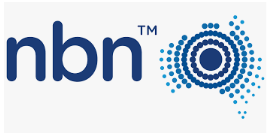What is a loan?
A loan is the lending of money to a party (borrower) coupled with the obligation that the loan amount (principal) plus interest will be repaid at a future date.
There are 2 types of loans:
When should I use a loan?
There are a number of considerations to be balanced in determining the most appropriate non-grant financing options (or blend of options).
Loans are generally appropriate where the borrower has a history of or reasonable expectation to generate a reliable positive cash flow sufficient to make loan repayments and pay interest. Loans have a lower risk profile than equity, as loan obligations are paid as part of operational cash flows and prior to any distributions to equity.
Commercial loans can be used to bridge a commercial finance market gap. An example where Government (or quasi Government) commercial loans could be used is where the volume of private finance required is more than that available at the time the project is needed or is not available upfront because there is an expectation that private finance would be available later (following a de-risking of certain upfront risks). Commercial loans should generally not be used if private finance at similar terms is available.
Concessional loans are used to support policy objectives where some financial return is expected, however private financing is not available or is unaffordable. Further guidance on Concessional Loans is available in the Finance Advice Paper - Q&A – Concessional Loans and the Resource Management Guide No. 115 – Accounting for Concessional Loans.
Characteristics of loans
Accounting and budget classification and reporting of loans
Accounting standards classify loans as financial assets. In addition to Annual Reporting requirements in accordance with the relevant accounting standards, loans over $200 million are subject to additional disclosure requirements in the Statement of Risks in Budget Paper 1 – Budget Strategy and Outlook.
Examples of Commonwealth loans
Commercial loan | Concessional loan |
 |  |
| The Commonwealth is providing a loan to NBN Co on commercial terms of up to $19.5 billion for the period from 1 July 2017 to 30 June 2024. A Government loan on commercial terms continues to represent the most cost‑effective way to raise necessary debt and secure funding so NBN Co can focus on the remaining rollout as it significantly scales up toward completion in 2020. | The Commonwealth is providing a $2 billion concessional loan facility to a company wholly owned by the Sydney Motorway Corporation (which itself is partly owned by the New South Wales Government and the private sector). The loan ensures financing for a new 33km motorway (including 14km of road above ground and approximately 19km of tunnels) that links western and south-western Sydney with the Sydney Central Business District, Sydney Kingsford Smith International Airport and the Port Botany precinct. The project is being delivered in three stages and the loan from the Commonwealth in partnership with the New South Wales state Government allows Stage 1 and Stage 2 to be delivered concurrently. |


